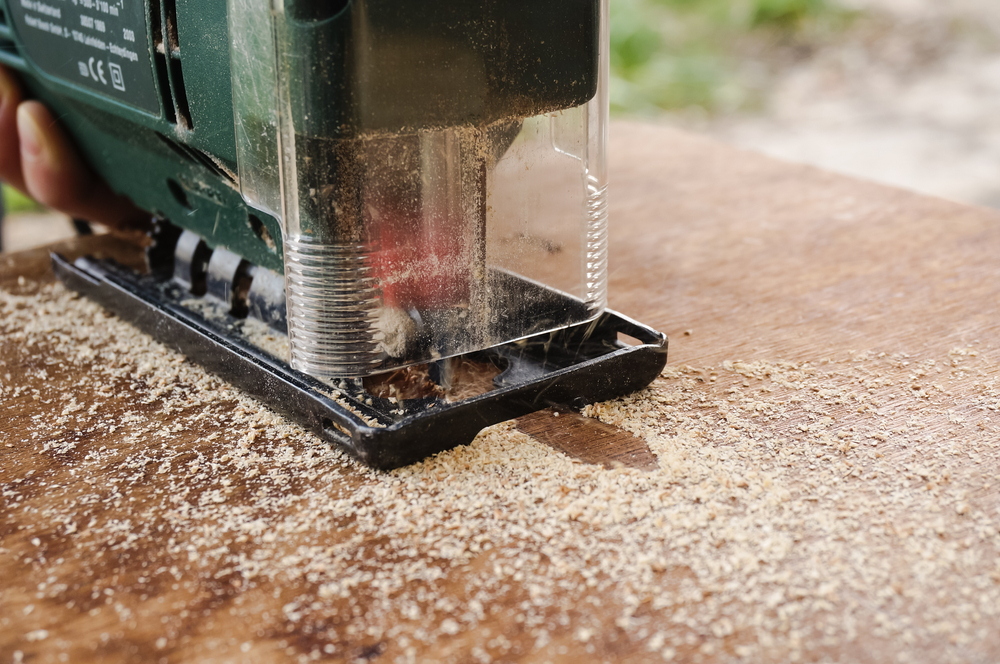A reciprocating saw and a jigsaw are both power tools that are commonly used for cutting wood, metal, and other materials. While they may seem similar at first glance, there are several key differences between the two tools that make them more suitable for different types of projects and applications.
A reciprocating saw, also known as a sawzall or hack saw, is a power tool that is commonly used for demolition, construction, and carpentry work. It is called a reciprocating saw because the blade moves back and forth in a reciprocating motion as it cuts through material. Reciprocating saws are particularly useful for cutting through dense or hard materials, or for making precise cuts in tight spaces where a larger saw would be difficult to maneuver.
A jigsaw, on the other hand, is a power tool that is commonly used for cutting curves and intricate shapes in wood, metal, and other materials. It is called a jigsaw because the blade moves up and down in a rapid, jagged motion as it cuts through the material. Jigsaws are particularly useful for cutting complex shapes or for making precise cuts in tight spaces where a larger saw would be difficult to maneuver.
Contents
What is reciprocating saw
A reciprocating saw, also known as a sawzall or a hack saw, is a power tool that is commonly used for demolition, construction, and carpentry work. It is called a reciprocating saw because the blade moves back and forth in a reciprocating motion as it cuts through material.
Reciprocating saws have a long history dating back to the early 20th century, when they were first invented as a portable alternative to the stationary band saw. Since then, they have become an essential tool for many trades and DIY enthusiasts, and there are now many different types and models available on the market.
Reciprocating saws can be used for a wide range of applications, including cutting through wood, metal, plastic, and other materials. They are particularly useful for cutting through dense or hard materials, or for making precise cuts in tight spaces where a larger saw would be difficult to maneuver.
Types of Reciprocating Saws
There are several different types of reciprocating saws available, each with its own advantages and disadvantages. The most common types are:
- Corded reciprocating saws
- Cordless reciprocating saws
- Pneumatic reciprocating saws
- Comparison of the advantages and disadvantages of each type
Corded reciprocating saws
These saws are powered by electricity and require a power outlet or extension cord to operate. They are generally more powerful and have a longer runtime than cordless saws, but they can be more inconvenient to use because of the need for a power source.
Cordless reciprocating saws
These saws are powered by a rechargeable battery and do not require a power outlet. They are more portable and convenient to use, but they may not have as much power or runtime as corded saws.
Pneumatic reciprocating saws
These saws are powered by compressed air and are often used in industrial or manufacturing settings. They are lightweight and easy to maneuver, but they require a compressor and air hose to operate.
When choosing a reciprocating saw, it’s important to consider the specific needs of your project and the type of work you’ll be doing. Corded saws may be more powerful and suitable for heavy-duty work, while cordless saws may be more convenient for smaller projects or for use in tight spaces. Pneumatic saws may be the best choice for industrial settings where compressed air is readily available.
Features to Consider When Choosing a Reciprocating Saw
There are a few key features to consider when choosing a reciprocating saw:
- Blade length and stroke length
- Power source and voltage
- Adjustability and versatility
- Weight and size
- Price and brand reputation
Blade length and stroke length
The blade length refers to the maximum length of the blade that the saw can accommodate, while the stroke length refers to the distance that the blade travels during each cutting stroke. A longer blade length and stroke length may be more suitable for cutting through thicker or harder materials, while a shorter blade length and stroke length may be more suitable for making precise cuts in tight spaces.
Power source and voltage
As mentioned above, reciprocating saws can be powered by electricity, battery, or compressed air. The power source and voltage will affect the saw’s performance and runtime, so it’s important to choose a saw that is suitable for your needs.
Adjustability and versatility
Some reciprocating saws have adjustable speeds or stroke lengths, which can be helpful for adapting to different materials and cutting needs. Some saws also have features like orbital action or tool-less blade changes, which can make them more versatile and easier to use.
Weight and size
The weight and size of the saw will affect its maneuverability and ease of use. A lighter saw may be easier to handle, but it may not have as much power as a heavier saw.
What Is Jigsaw
A jigsaw is a power tool that is commonly used for cutting curves and intricate shapes in wood, metal, and other materials. It is called a jigsaw because the blade moves up and down in a rapid, jagged motion as it cuts through the material.
Jigsaws have been around for over a century, and they have become an essential tool for many trades and DIY enthusiasts. They are particularly useful for cutting complex shapes or for making precise cuts in tight spaces where a larger saw would be difficult to maneuver.
There are several different types of jigsaws available, each with its own advantages and disadvantages. The most common types are:
Types of Jigsaws
- Corded jigsaws: These jigsaws are powered by electricity and require a power outlet or extension cord to operate. They are generally more powerful and have a longer runtime than cordless jigsaws, but they can be more inconvenient to use because of the need for a power source.
- Cordless jigsaws: These jigsaws are powered by a rechargeable battery and do not require a power outlet. They are more portable and convenient to use, but they may not have as much power or runtime as corded jigsaws.
- Pneumatic jigsaws: These jigsaws are powered by compressed air and are often used in industrial or manufacturing settings. They are lightweight and easy to maneuver, but they require a compressor and air hose to operate.
When choosing a jigsaw, it’s important to consider the specific needs of your project and the type of work you’ll be doing. Corded jigsaws may be more powerful and suitable for heavy-duty work, while cordless jigsaws may be more convenient for smaller projects or for use in tight spaces. Pneumatic jigsaws may be the best choice for industrial settings where compressed air is readily available.
Features to Consider When Choosing a Jigsaw
There are a few key features to consider when choosing a jigsaw:
Blade type and compatibility
Jigsaws use specially designed blades that are designed to move in an up and down motion. There are many different types of jigsaw blades available, each with its own specific purpose and material compatibility. It’s important to choose the right blade for your specific needs and to make sure that the blade is compatible with your jigsaw.
Power source and voltage
As mentioned above, jigsaws can be powered by electricity, battery, or compressed air. The power source and voltage will affect the jigsaw’s performance and runtime, so it’s important to choose a jigsaw that is suitable for your needs.
Speed and stroke length
The speed of a jigsaw refers to the rate at which the blade moves up and down, while the stroke length refers to the distance that the blade travels during each cutting stroke. A jigsaw with adjustable speeds and stroke lengths may be more versatile and able to adapt to different materials and cutting needs.
Weight and size
The weight and size of the jigsaw will affect its maneuverability and ease of use. A lighter jigsaw may be easier to handle, but it may not have as much power as a heavier jigsaw.
Price and brand reputation
The price of a jigsaw can vary significantly, and it’s important to consider your budget when making a purchase. It can also be helpful to research the reputation of different brands and read reviews from other users to get a sense of the quality and reliability of different jigsaws.
Conclusion
While both reciprocating saws and jigsaws can be used for similar types of cutting tasks, they each have their own specific strengths and weaknesses. Reciprocating saws are generally more powerful and suitable for heavy-duty work, while jigsaws are more versatile and able to make precise cuts in tight spaces. Ultimately, the choice between a reciprocating saw and a jigsaw will depend on the specific needs of your project and the type of work you’ll be doing.

